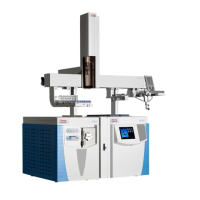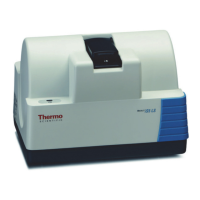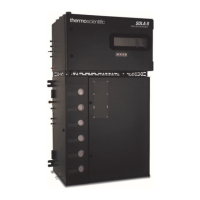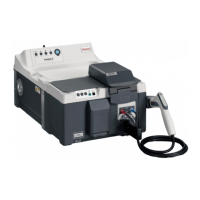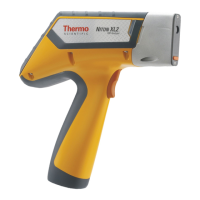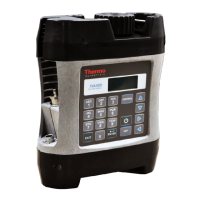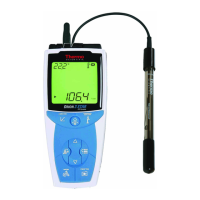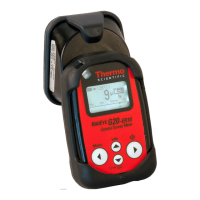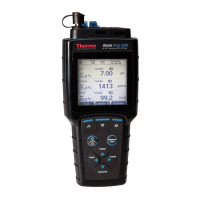Do you have a question about the Thermo Scientific ISE and is the answer not in the manual?
Description of the combination fluoride electrode.
Description of the fluoride half-cell electrode.
Catalog numbers and descriptions of fluoride calibration standards.
Details on filling solutions for different electrode types.
Preparation of TISAB for low-level fluoride measurements.
Preparation of TISAB IV for complex samples.
Preparation steps for half-cell and combination fluoride electrodes.
Step-by-step guide for filling the electrode with solution.
Details on sample temperature, composition, and TISAB usage.
Procedure to restore the sensing surface using toothpaste.
Procedure to flush the electrode junction if clogged.
Instructions for reassembling the electrode after maintenance.
Simple procedure for measuring multiple samples with standards.
Methods for measuring samples without calibration curves.
Technique for measuring dilute samples or in complexing agents.
Quick titration method for species with no stable standards.
Method for viscous or concentrated samples.
Measurement of ions where no ISE exists.
Using electrode as endpoint detector for fluoride titration.
Preparing the electrode and meter for direct calibration.
Method for preparing standards using serial dilution.
Setting up the electrode and meter for low-level measurements.
Calibration using an ISE meter with Autoblank.
Table providing guidelines for known addition volumes and concentrations.
Procedure for measuring fluoride in acidic samples.
Describes electrode potential response and time.
Factors affecting electrode measurement reproducibility.
Minimum detectable fluoride concentration.
How temperature affects electrode potential and slope.
Anions and cations that may interfere with measurements.
Impact of pH on fluoride measurements and interferences.
How complexing agents affect fluoride measurements.
Explanation of how the fluoride electrode works.
Troubleshooting steps for the measurement meter.
Troubleshooting steps for the electrode.
Reviewing procedures and ensuring proper technique.
Contact information for technical support.
Information on product warranty.
Description of the combination fluoride electrode.
Description of the fluoride half-cell electrode.
Catalog numbers and descriptions of fluoride calibration standards.
Details on filling solutions for different electrode types.
Preparation of TISAB for low-level fluoride measurements.
Preparation of TISAB IV for complex samples.
Preparation steps for half-cell and combination fluoride electrodes.
Step-by-step guide for filling the electrode with solution.
Details on sample temperature, composition, and TISAB usage.
Procedure to restore the sensing surface using toothpaste.
Procedure to flush the electrode junction if clogged.
Instructions for reassembling the electrode after maintenance.
Simple procedure for measuring multiple samples with standards.
Methods for measuring samples without calibration curves.
Technique for measuring dilute samples or in complexing agents.
Quick titration method for species with no stable standards.
Method for viscous or concentrated samples.
Measurement of ions where no ISE exists.
Using electrode as endpoint detector for fluoride titration.
Preparing the electrode and meter for direct calibration.
Method for preparing standards using serial dilution.
Setting up the electrode and meter for low-level measurements.
Calibration using an ISE meter with Autoblank.
Table providing guidelines for known addition volumes and concentrations.
Procedure for measuring fluoride in acidic samples.
Describes electrode potential response and time.
Factors affecting electrode measurement reproducibility.
Minimum detectable fluoride concentration.
How temperature affects electrode potential and slope.
Anions and cations that may interfere with measurements.
Impact of pH on fluoride measurements and interferences.
How complexing agents affect fluoride measurements.
Explanation of how the fluoride electrode works.
Troubleshooting steps for the measurement meter.
Troubleshooting steps for the electrode.
Reviewing procedures and ensuring proper technique.
Contact information for technical support.
Information on product warranty.
| Category | Measuring Instruments |
|---|---|
| Manufacturer | Thermo Scientific |
| Measurement Range | Dependent on electrode type |
| Resolution | Dependent on electrode type |
| Accuracy | Dependent on electrode type |
| Electrode Types | ISE (Ion Selective Electrodes) |
| Display | LCD |
| Power Supply | AC adapter or battery |
| Dimensions | Varies by model |
| Weight | Varies by model |
